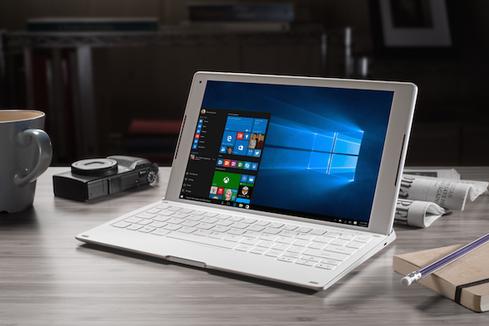Windows 10 Now Running On 300 Million DevicesWindows 10 Now Running On 300 Million Devices
Microsoft announces Windows 10 is active on 300 million devices, and emphasizes the upcoming end to its year-long free upgrade offer.
.jpg?width=1280&auto=webp&quality=95&format=jpg&disable=upscale)

Windows 10: Why These 10 New Features Matter
Windows 10: Why These 10 New Features Matter (Click image for larger view and slideshow.)
Windows 10 is currently running on 300 million active devices worldwide, Microsoft reported May 5.
This is the first update we've heard on the Windows 10 device count since January, when the company announced Windows 10 was active on 200 million devices. Microsoft's goal is to have Windows 10 running on one billion devices by July 2018, three years from the date of its official rollout.
The Windows 10 device count includes more than desktop PCs. Microsoft rounds up all devices in its updates, including Windows 10 smartphones, Surface Pro, Surface Book, and Xbox One.
[Microsoft: SharePoint Server 2016 is now available.]
In its January announcement, Microsoft noted more than three-quarters of its enterprise customers were running active pilots of Windows 10. Between enterprise and education customers, there were more than 22 million devices running the new OS. This number was not updated in Microsoft's Thursday announcement.
Windows 10 marked a transformational change in Microsoft's approach to building and distributing its operating system. When it announced changes like Windows-as-a-Service and the Universal Windows Platform in January 2015, the company also announced it would be offering Windows 10 as a free upgrade for one year following its July 2015 launch.
Now, as summer approaches and the one-year upgrade offer comes to an end, Microsoft is reminding Windows users they don't have much longer to take advantage.
If you're still running an older version of Windows, July 29, 2015, is the last day you can upgrade to Windows 10 for free. Starting July 30, you can get Windows 10 by purchasing a new device running the OS or shelling out $119 to buy a full version of Windows 10 Home.
Redmond claims Windows 10 is growing more rapidly than any previous version of Windows. Its newest OS has already outpaced Windows 7 by nearly 140% and Windows 8 by nearly 400%.
That said, it's worth noting Microsoft has been using an especially aggressive distribution strategy to encourage all Windows users to adopt Windows 10. If you were using Windows 8, Windows 7, or an earlier version of Windows, you were frequently prompted to register for an upgrade before Windows 10 officially launched.
Enterprise customers were not exempt from Microsoft's upgrade push. Earlier this year, the "Get Windows 10" alerts started arriving on many business PCs connected to an Active Directory domain and configured to receive updates via Windows Update.
Devices running Windows 7 Enterprise and Windows 8.1 Enterprise were exempt from the alerts because they were not eligible for the free Windows 10 upgrade. However, Microsoft is adopting a few strategies to encourage businesses to upgrade.
One of these is the Windows 10 roadmap, which Microsoft published in April to keep enterprise customers updated on which features were recently released, in public preview, still undergoing development and testing, or no longer in the works. The idea is to become more transparent so that business users have a better idea of what's coming to their PCs.
Microsoft will continue rolling out changes to Windows 10 throughout the summer, when it plans to launch a Windows 10 Anniversary Update. This update, first demonstrated at Microsoft's Build conference, will include several key upgrades to features such as Cortana, digital inking, and Microsoft Edge.
About the Author
You May Also Like






